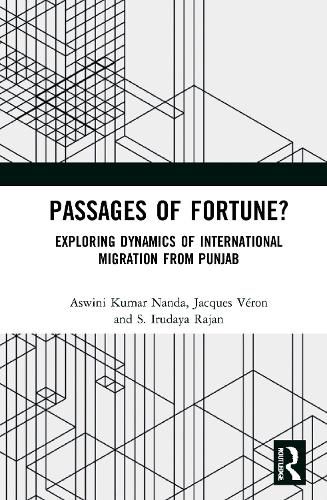Readings Newsletter
Become a Readings Member to make your shopping experience even easier.
Sign in or sign up for free!
You’re not far away from qualifying for FREE standard shipping within Australia
You’ve qualified for FREE standard shipping within Australia
The cart is loading…






This book examines international out-migration from North India, focusing on the state of Punjab. It is the first-ever empirical exploration of the causes, processes, patterns and consequences of international out-migration based on a robust sample of 10,000 households drawn from both rural and urban areas. The volume explores a range of issues such as current migration, return migration, remittances, reverse remittances, diaspora philanthropy, migration consultancy services, international marriages, campaigns for safe migration abroad and plans for emigration in future. It also addresses questions surrounding the use of paid labour by households to replace the work done by the emigrants and studies villages as the migration setting. Additionally, the book organically links to a well-spread-out and vibrant Punjabi diaspora, as well as providing viable baseline data on a range of indicators.
A key text on migration studies, this volume will be of great interest to scholars and researchers of development studies, economics, demography, sociology, social anthropology and diaspora studies.
$9.00 standard shipping within Australia
FREE standard shipping within Australia for orders over $100.00
Express & International shipping calculated at checkout
This book examines international out-migration from North India, focusing on the state of Punjab. It is the first-ever empirical exploration of the causes, processes, patterns and consequences of international out-migration based on a robust sample of 10,000 households drawn from both rural and urban areas. The volume explores a range of issues such as current migration, return migration, remittances, reverse remittances, diaspora philanthropy, migration consultancy services, international marriages, campaigns for safe migration abroad and plans for emigration in future. It also addresses questions surrounding the use of paid labour by households to replace the work done by the emigrants and studies villages as the migration setting. Additionally, the book organically links to a well-spread-out and vibrant Punjabi diaspora, as well as providing viable baseline data on a range of indicators.
A key text on migration studies, this volume will be of great interest to scholars and researchers of development studies, economics, demography, sociology, social anthropology and diaspora studies.